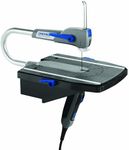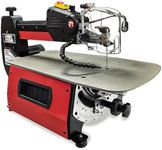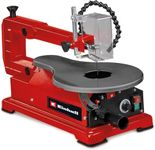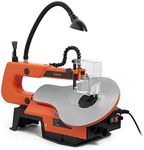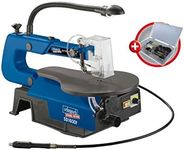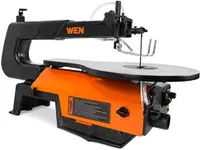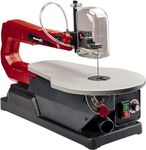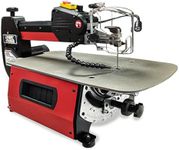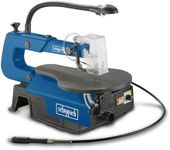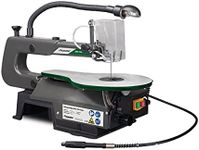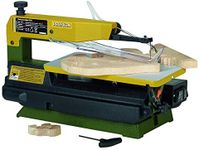Buying Guide for the Best Scroll Saws
Choosing the right scroll saw can make a significant difference in your woodworking projects. Scroll saws are specialized tools designed for intricate cuts and detailed work, making them ideal for crafting, art, and precision cutting. When selecting a scroll saw, it's important to consider several key specifications to ensure you get the best fit for your needs. Understanding these specs will help you make an informed decision and find a scroll saw that matches your requirements and skill level.Throat DepthThroat depth refers to the distance between the blade and the back of the saw. This spec is important because it determines the maximum width of the material you can cut. Throat depths typically range from 16 to 30 inches. If you plan to work on larger projects, a greater throat depth will be beneficial. For smaller, more detailed work, a smaller throat depth may suffice.
Blade TypeScroll saws can use different types of blades, such as pin-end or plain-end blades. Pin-end blades are easier to change but offer less precision, while plain-end blades provide more accuracy and are better for detailed work. Consider the type of projects you will be working on; if precision is key, opt for plain-end blades.
Speed ControlSpeed control allows you to adjust the blade's speed, which is crucial for different materials and types of cuts. Variable speed control is ideal as it lets you tailor the speed to your specific project needs. Lower speeds are better for delicate materials, while higher speeds are suitable for harder materials. Choose a scroll saw with variable speed control for versatility.
Table TiltTable tilt refers to the ability of the saw's table to tilt, usually up to 45 degrees. This feature is important for making angled cuts and intricate designs. If your projects require bevel cuts or complex angles, a scroll saw with a tilting table will be very useful. Ensure the table tilts smoothly and locks securely in place.
Blade TensioningBlade tensioning is the mechanism that keeps the blade tight and stable during cutting. Proper tensioning is crucial for accurate cuts and preventing blade breakage. Look for a scroll saw with easy and precise blade tensioning controls. This will help you maintain consistent tension and improve your cutting accuracy.
Dust CollectionDust collection systems help keep your workspace clean by collecting sawdust and debris. This spec is important for maintaining visibility and reducing cleanup time. Some scroll saws come with built-in dust blowers or ports for attaching external vacuums. If you value a clean work environment, choose a scroll saw with effective dust collection features.
VibrationVibration can affect the accuracy and comfort of your cuts. Lower vibration levels are preferable as they provide a smoother cutting experience. Look for scroll saws with features that minimize vibration, such as sturdy construction and vibration-dampening technology. If you plan to work for extended periods, a saw with low vibration will be more comfortable to use.
